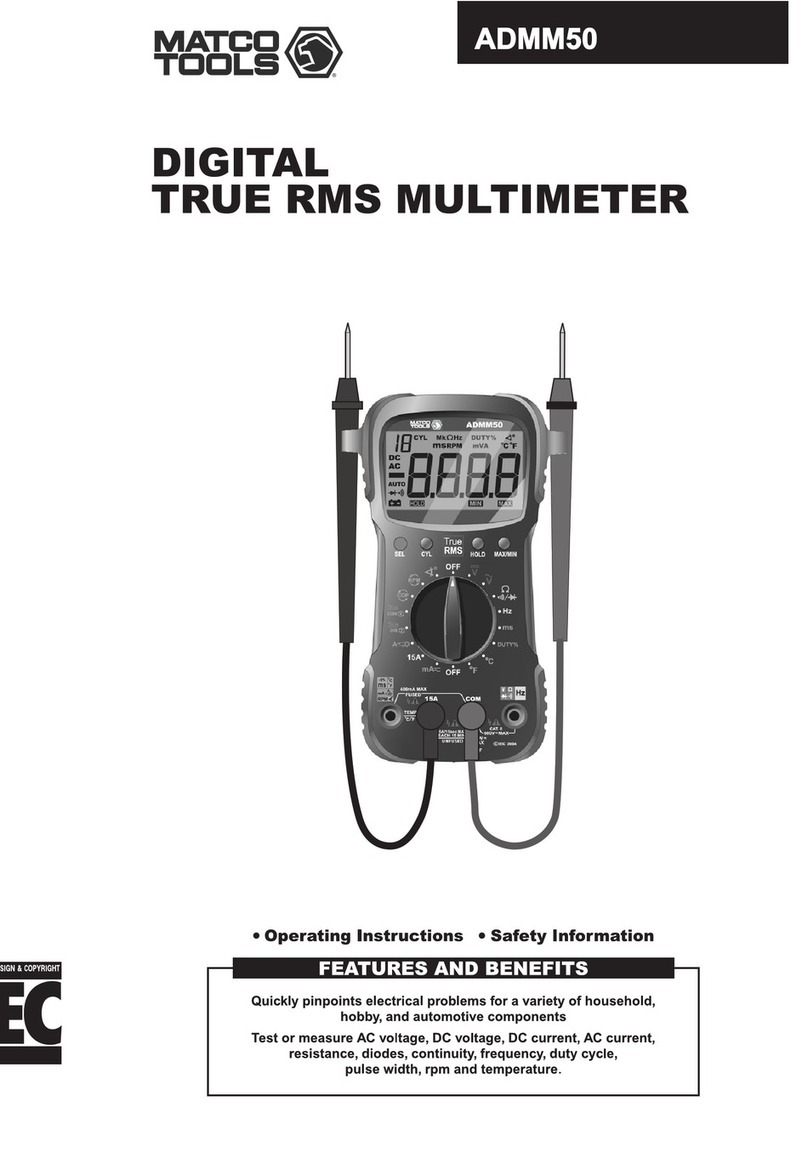Average sensing RMS calibrated
RMS (Root-Mean-Square) is the term used to describe the effective or equivalent DC value of an
AC signal. Most digital multimeters use average sensing RMS calibrated technique to measure
RMS values of AC signals. This technique is to obtain the average value by rectifying and filtering
the AC signal. The average value is then scaled upward (calibrated) to read the RMS value of a
sine wave. In measuring pure sinusoidal waveform, this technique is fast, accurate and cost
effective. In measuring non-sinusoidal waveforms, however, significant errors can be introduced
because of different scaling factors relating average to RMS values.
True RMS
True RMS is a term which identifies a DMM that responds accurately to the effective RMS value
regardless of the waveforms such as: square, sawtooth, triangle, pulse trains, spikes, as well as
distorted waveforms with the presence of harmonics. Harmonics may cause :
1)Overheated transformers, generators and motors to burn out faster than normal
2)Circuit breakers to trip prematurely
3)Fuses to blow
4)Neutrals to overheat due to the triplen harmonics present on the neutral
5)Bus bars and electrical panels to vibrate
Crest Factor
Crest Factor is the ratio of the Crest (instantaneous peak) value to the True RMS value, and is
commonly used to define the dynamic range of a True RMS DMM. A pure sinusoidal waveform has
a Crest Factor of 1.4. A badly distorted sinusoidal waveform normally has a much higher Crest
Factor.
NMRR (Normal Mode Rejection Ratio)
NMRR is the DMM's ability to reject unwanted AC noise effect that can cause inaccurate DC
measurements. NMRR is typically specified in terms of dB (decibel). This series has a NMRR
specification of >60dB at 50 and 60Hz, which means a good ability to reject the effect of AC noise
in DC measurements.
CMRR (Common Mode Rejection Ratio)
Common mode voltage is voltage present on both the COM and VOLTAGE input terminals of a
DMM, with respect to ground. CMRR is the DMM's ability to reject common mode voltage effect
that can cause digit rolling or offset in voltage measurements. This series has a CMRR
specifications of >60dB at DC to 60Hz in ACV function; and >100dB at DC, 50 and 60Hz in DCV
function. If neither NMRR nor CMRR specification is specified, a DMM's performance will be
uncertain.
4) OPERATION
CAUTION
Before and after hazardous voltage measurements, test the voltage function on a known source
such as line voltage to determine proper meter functioning.






























